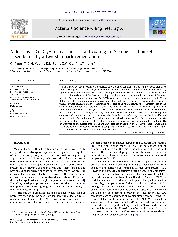摘要
The dual-layer Ce-Cr/Al coating was deposited onto the open-cell nickel-based foam by a two-step pack cementation process. The first layer was composed of Ce-modified chromium; the second (external) layer was made of Al. The research aimed to highlight the influence of Ce modified on the microstructure and oxidation resistance of the Ce-Cr/Al coating. The phase composition and microstructure of the inner layer Ce-Cr coating and the dual-layer Ce-Cr/Al coating before and after oxidation were studied by X-ray diffraction (XRD), scanning electron microscopy (SEM) and energy dispersive spectrum (EDS), respectively. Simultaneously, in order to distinguish the effect of Ce, the microstructure characteristics of the Cr/Al coatings without Ce were investigated. The oxidation resistance of Ce-Cr/Al coating was also compared with the Ce-Cr coating, Cr/Al coating and bare nickel-based foams under isothermal conditions for 120 h at 1173 and 1273 K, respectively. The results show that the dual-layer Ce-Cr/Al coatings are compact and uniform with no microcracks. The Ce added can effectively restrain the interdiffusion between the Ce-Cr coating and Al coating during the oxidation process. Therefore, a continuous Al2O3 layer is formed on the surface of the Ce-Cr/Al coating, which has a slower oxidation rate than the Cr2O3 layer formed on the surface of the Ce-Cr and Cr/Al coatings. In addition, the Ce-Cr/Al coated foams have a relatively good mechanical performance as compared to the Ce-Cr coated foams, the Cr/Al coated foams and bare nickel-based foams before and after oxidation.
- 出版日期2013-4-15
- 单位哈尔滨工业大学
